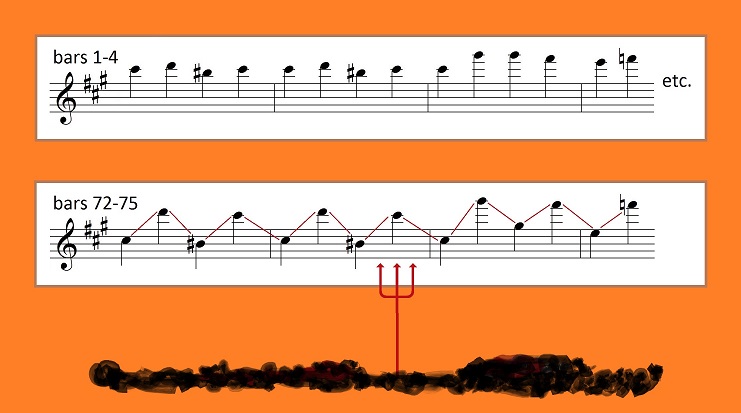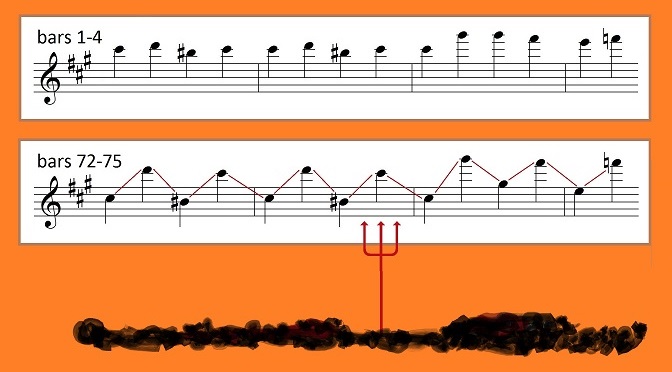The Magic of Octave Displacement
As I pointed out in my very first post to this blog, if two pitches are an octave apart, the ear hears them as having a certain sameness — in fact, music theorists talk of all the various C-sharps (for example) as forming an “equivalence class.” Composers can exploit that fact using a technique I call octave displacement.
In my Prelude No. 3, the opening melody has a smooth contour, moving mostly by half steps and whole steps (except for the perfect fifth in bar 3). But when it returns in bars 72-75, the notes alternate between the lower octave and the higher octave, giving the modified melody a jagged contour with a truly devilish sound — in keeping with the Allegro diabolico marking for the piece. Yet despite the wild leaps, it remains clear to the ear that it is the same melody. Devilish magic! 🙂

The jagged version of the melody can be heard around 2:15 in this video:

